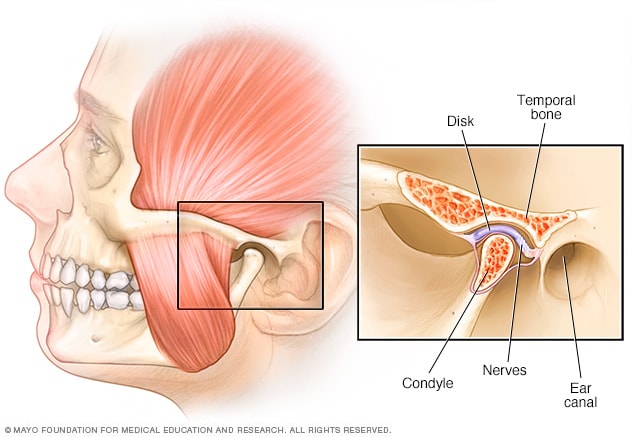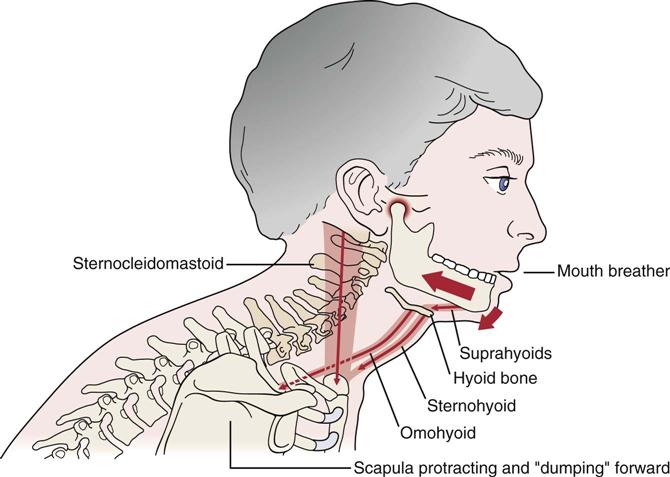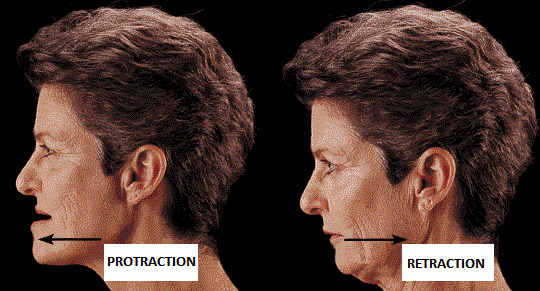quattazel
Professional idiot
- Joined
- May 23, 2020
- Posts
- 59
- Reputation
- 127
Alright lads, this is going to be a long one...
Here's your tempromandibular joint (TMJ):

Whenever you open your mouth, talk, eat, gawp, etc. you will utilise this joint so it is of paramount importance that you know how to make sure you don't get temporomandibular joint dysfunction (TMD).
What is TMD?
It's a condition affecting the movement of your jaw, which results in pain (sometimes serious). Symptoms include:
Approximately 33% of the population has at least one TMD symptom and 3.6% to 7% of the population has TMD with sufficient severity to cause them to seek treatment. – Edward & North, 2009 (link)
Patients with chronic TMD frequently report symptoms of depression, poor sleep quality, and low energy. Furthermore, chronic TMD has been found to interfere with normal social activity and interpersonal relationships and to negatively affect the ability to maintain employment. – Morris et al., 1997 (link)
Let's take a look at the causes...
How is it caused?
There are some obvious causes such as trauma to the jaw and genetic predispositions/disorders, BUT it can also be caused by:

This forces the TMJ to move distally (away from where it is), which will eventually cause problems. Here is a good video on this.
Stress may cause bruxism, which is the involuntary grinding of your teeth in sleep, which can agitate the TMJ. One test for this is to check if your jaw is unusually tight/painful upon waking.
When the maxilla and mandible do not achieve their genetic potential in length, width, or vertical position, the effects are seen in mal-relationships and dysfunctions in the patient’s tissues, bones, muscles, and nerves. The temporomandibular joint (TMJ) relationship may then become compromised when this occurs, as it compensates for the discrepancies in normal growth and development. [...] If this space is insufficient or reduced or restricted and the condylar head grows posterosuperiorly or is iatrogenically repositioned posteriorly or posterosuperiorly, the condyle will pinch this tissue and usually the result will be pain. – Sims & Stack, 2007 (link to PDF)
YOU SHOULD NOT GO ON A CHEWING MARATHON IF YOU HAVE ANY JAW JOINT PROBLEMS!!!
You will cause yourself pain and TMD if you have any of these symptoms mentioned above in the first section, as it causes further agitation of the TMJ. A way to check if you have jaw joint problems is if you put your pinky fingers in your ears and open and close your mouth. Any clicking, creaking, popping etc. means you have a potential problem. Another way to check is to see how many fingers you can put in your mouth when it is at its maximum opening (three is good). Here is a video from Dr Mew talking about the risk.
How do we go about fixing or preventing TMJ?
Solutions to TMD (and mitigation of pain)
Magnesium
The first solution is by taking magnesium supplements. Magnesium is vital for muscle function and insufficient consumption or utilisation causes bruxism. Taking 100mg of magnesium (for adults) causes a reduction or sometimes disappearance of bruxism symptoms, which can reoccur if these supplements are stopped. This is one way to resolve bruxism, which has the additional benefit of better sleep quality.
A magnesium-deficient diet is said to cause frequent teeth grinding in both sleeping and awake pigs. In humans, the suggested treatment involves magnesium supplements. According to Ploceni, for instance, prolonged magnesium administration nearly always provides a cure for bruxism. This confirms the earlier report of Lehvila, which claimed remarkable reductions (and sometimes even disappearance) in the frequency and duration of grinding episodes in six patients who took, once a day, a tablet of assorted vitamins and minerals which included 25 mg (in children) or 100 mg (in adults) of magnesium), for at least five weeks. When the supplements' intake stopped, the symptoms returned. - Moti Nissani, 2001 (link)
Fixing Forward Head Posture
There is a high correlation between forward head posture and TMD. This is because the mandible (lower part of the jaw which you can move) is attached to the sternum through the hyoid musculature, and moving the head more forward results in a greater pull of the mandible from those structures. Fixing this (and your posture in general) should help to prevent or mitigate the effects.
Based on these findings, it was concluded that changing mandibular position affected body posture. Conversely, changing body posture affected mandibular position. – Sakaguchi et al., 2007 (link)

Mandibular Protraction (IMPORTANT!)
This will help the most in resolving TMD symptoms. Since we've already established that the mandible is in a wrong position with TMD, protract the jaw by about 2-4 millimeters and stay there.

You must also make sure that you protract the jaw WITHOUT tensing the supra hyoid muscles. Strengthen the pterygoid muscles (click on image to zoom in):

The lateral pterygoid can be strengthened by opening the jaw forward and downward while resisting with your palm. Make sure to also control the eccentric phase (reversal).
The medial pterygoid can be strengthened by closing the jaw forward, form an open base position. Once again, use your palm as resistance and make sure to control the eccentric phase.
In summary:
Here's your tempromandibular joint (TMJ):

Whenever you open your mouth, talk, eat, gawp, etc. you will utilise this joint so it is of paramount importance that you know how to make sure you don't get temporomandibular joint dysfunction (TMD).
What is TMD?
It's a condition affecting the movement of your jaw, which results in pain (sometimes serious). Symptoms include:
- Pain/tenderness of your jaw and TMJ
- Aching pain in and around your ear
- Difficulty chewing or pain while chewing
- Aching facial pain
- Jaw clicking, crepitation (cracking) or popping
- Locking of your joint, making it difficult to open or close your mouth
Approximately 33% of the population has at least one TMD symptom and 3.6% to 7% of the population has TMD with sufficient severity to cause them to seek treatment. – Edward & North, 2009 (link)
Patients with chronic TMD frequently report symptoms of depression, poor sleep quality, and low energy. Furthermore, chronic TMD has been found to interfere with normal social activity and interpersonal relationships and to negatively affect the ability to maintain employment. – Morris et al., 1997 (link)
Let's take a look at the causes...
How is it caused?
There are some obvious causes such as trauma to the jaw and genetic predispositions/disorders, BUT it can also be caused by:
- A recessed maxilla
- Stress
- Bruxism
This forces the TMJ to move distally (away from where it is), which will eventually cause problems. Here is a good video on this.
Stress may cause bruxism, which is the involuntary grinding of your teeth in sleep, which can agitate the TMJ. One test for this is to check if your jaw is unusually tight/painful upon waking.
When the maxilla and mandible do not achieve their genetic potential in length, width, or vertical position, the effects are seen in mal-relationships and dysfunctions in the patient’s tissues, bones, muscles, and nerves. The temporomandibular joint (TMJ) relationship may then become compromised when this occurs, as it compensates for the discrepancies in normal growth and development. [...] If this space is insufficient or reduced or restricted and the condylar head grows posterosuperiorly or is iatrogenically repositioned posteriorly or posterosuperiorly, the condyle will pinch this tissue and usually the result will be pain. – Sims & Stack, 2007 (link to PDF)
YOU SHOULD NOT GO ON A CHEWING MARATHON IF YOU HAVE ANY JAW JOINT PROBLEMS!!!
You will cause yourself pain and TMD if you have any of these symptoms mentioned above in the first section, as it causes further agitation of the TMJ. A way to check if you have jaw joint problems is if you put your pinky fingers in your ears and open and close your mouth. Any clicking, creaking, popping etc. means you have a potential problem. Another way to check is to see how many fingers you can put in your mouth when it is at its maximum opening (three is good). Here is a video from Dr Mew talking about the risk.
How do we go about fixing or preventing TMJ?
Solutions to TMD (and mitigation of pain)
Magnesium
The first solution is by taking magnesium supplements. Magnesium is vital for muscle function and insufficient consumption or utilisation causes bruxism. Taking 100mg of magnesium (for adults) causes a reduction or sometimes disappearance of bruxism symptoms, which can reoccur if these supplements are stopped. This is one way to resolve bruxism, which has the additional benefit of better sleep quality.
A magnesium-deficient diet is said to cause frequent teeth grinding in both sleeping and awake pigs. In humans, the suggested treatment involves magnesium supplements. According to Ploceni, for instance, prolonged magnesium administration nearly always provides a cure for bruxism. This confirms the earlier report of Lehvila, which claimed remarkable reductions (and sometimes even disappearance) in the frequency and duration of grinding episodes in six patients who took, once a day, a tablet of assorted vitamins and minerals which included 25 mg (in children) or 100 mg (in adults) of magnesium), for at least five weeks. When the supplements' intake stopped, the symptoms returned. - Moti Nissani, 2001 (link)
Fixing Forward Head Posture
There is a high correlation between forward head posture and TMD. This is because the mandible (lower part of the jaw which you can move) is attached to the sternum through the hyoid musculature, and moving the head more forward results in a greater pull of the mandible from those structures. Fixing this (and your posture in general) should help to prevent or mitigate the effects.
Based on these findings, it was concluded that changing mandibular position affected body posture. Conversely, changing body posture affected mandibular position. – Sakaguchi et al., 2007 (link)

Mandibular Protraction (IMPORTANT!)
This will help the most in resolving TMD symptoms. Since we've already established that the mandible is in a wrong position with TMD, protract the jaw by about 2-4 millimeters and stay there.

You must also make sure that you protract the jaw WITHOUT tensing the supra hyoid muscles. Strengthen the pterygoid muscles (click on image to zoom in):
The lateral pterygoid can be strengthened by opening the jaw forward and downward while resisting with your palm. Make sure to also control the eccentric phase (reversal).
The medial pterygoid can be strengthened by closing the jaw forward, form an open base position. Once again, use your palm as resistance and make sure to control the eccentric phase.
In summary:
- Close your mouth with your lips, and breathe with your nose
- Optimise your tongue posture and swallowing technique
- Posturally protract your mandible 2-4 millimeters from maximal retraction (most important).
- Learn proper jaw opening and closing (second most important)
- Fix your FHP
- Avoid habitual jaw clenching during stress, exercise, and so on


